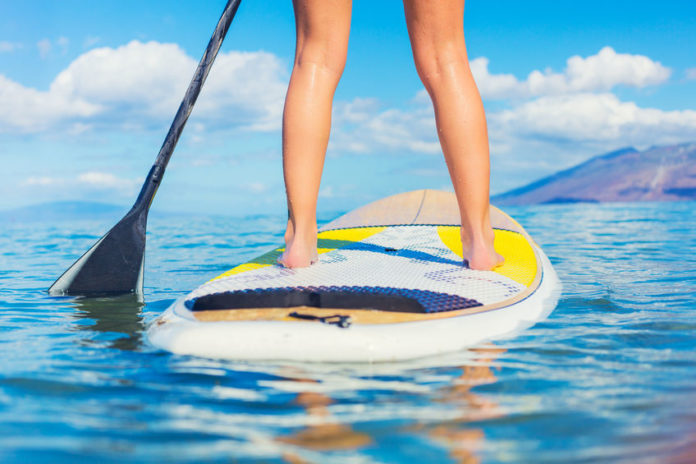
It was a perfect, sunny day on Aberdeen Creek just off the Chesapeake Bay. There, in front of me, floating placidly, was a stand-up paddleboard. This was my first experience with a stand-up paddleboard. It looked unassuming but I was suspicious. How do I approach the paddleboard? Can I really stand, paddle and propel myself across the water on this…board? The answer was yes. While it generally went well, in hindsight, the approach to the paddleboard was the same approach as tackling a new project, new office or new staff.
- Find stability first.
- Test it out.
- Fall off, laugh, get back on, try again.
Find stability first. Hmmm. How do I step onto this floating board without tumping (that’s a Texas term) myself into the Creek? Cautiously, I put both feet onto the board, spread them wide for a stable base, pushed off from the boat and just stood there. How did it feel? What stability did I notice? How precarious was I? For a few moments, just stand and observe.
It’s the same at the start of a new project. You need to find your base at the start. Do you understand the lay of the land? Have you met the key players and staff? Have you surveyed your environment? Do you understand the basics of the task? It’s only after you have a solid appreciation of the people, the situation and the work that you are ready to move forward. First, create stability through understanding.
Test it out. After finding stability, I cautiously experimented with paddling. How do I go forward; how do I turn; how do I account for the wind; how do I get more speed? I tried this and that while gauging my progress down and around the creek.
Once you are oriented with your new project, then you start testing. What approaches result in the most motivated staff? How do you build support with stakeholders? When you encounter resistance like the wind, what is the most effective way to manage that resistance? Over time, build a repertoire of techniques to use in heavy wind, light wind, and waves that hit you broadside. Also develop techniques to speed you forward when the waters are calm. It takes practice, experimenting, and observation of the dos and don’ts that work in each situation.
Fall off, laugh, get back on and try again. It was going well. I felt stable; was making good progress; and was gaining confidence. That’s when I needed to turn. I tried a new technique (back paddling) and back paddled my way off the back of the board into the Creek. That gave me the opportunity to learn the skill of climbing back on board, regaining stability, standing and paddling again.
It is inevitable that some techniques and approaches that you try will not work. The staff won’t respond well; the stakeholders revolt; progress goes backwards instead of forwards. That’s when you have a choice. I could have concluded that stand-up paddleboarding isn’t for me or I could try again. You have the same choice. Instead of reaching for the towel, you can say, “Well, THAT didn’t go well! What could I have done differently? What have I learned?” Then you regain your bearings and chart a new course for the work. And it’s even better if you laugh at your mistake. After all, we all fall in the creek sometime.





